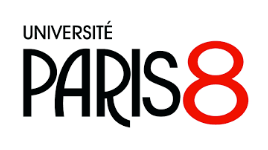12h00
UPS Pouchet, salle 124
Répertoires et choix linguistique d’enfants issus d’immigration en Italie du Nord Ouest: entre monolinguisme et plurilinguisme /
Language repertoires and language choices by young second generation immigrants in North-West Italy: between monolingualism and multilingualism
Marina Chini (U. Pavia)
Migration contexts offer multiple opportunities to study linguistic repertoires and uses of minority language speakers in connection with their social identity dynamics.
The retention (maintenance) or gradual abandon (shift) of the languages of origin (LO) in different domains of the host country are quite broadly investigated aspects, especially in old countries of immigration such as United States, Australia, Central and Northern Europe. These linguistic phenomena often go hand in hand with social changes: the study of the correlation between language uses (more precisely maintenance and shift) and social factors dates back to Kloss (1966; cfr. Clyne 2003).
The present contribution aims to concentrate the attention on the language choices made in the family and friend domains by an interesting and dynamic part of the immigrant population living in Lombardy, i.e. students between 10 and 15 years old. A 2002 survey conducted in the Province of Pavia on this specific population showed that, along with a dominant (50% of the subjects) exclusive use of the language of origin in the family domain, intra-ethnic bilingual uses were also very common (regarding 27-33% of the subjects); they were also supposedly favored by specific factors (e.g. sex, place of residence, geographic area of origin; Chini 2004).
This contribution will analyze the data of a similar survey conducted in 2012, exactly ten years later the one just mentioned, on 550 students in the same context, focusing on the growing presence of subjects born in Italy, the proper second generations (from 6% of the sample in 2002 to 40% in 2012). Language choices (especially bilingual choices) of pupils with a migration background will be discussed in connection with a variety of favorable and adverse factors. On these bases, we will then make some hypotheses about the future developments of monolingual vs. multilingual behavior among second generation subjects in this area of Italy.
References
Aronin L. & Singleton D., 2012, Multilingualism, Benjamins, Amsterdam.
Chini M., 2011, New linguistic minorities: repertoires, language manintenance and shift. International Journal of the Sociology of Language 210, 47-69.
Chini M. (a cura di), 2004, Plurilinguismo e immigrazione in Italia, FrancoAngeli, Milano.
Clyne M., 2003, Dynamics of language contact, Cambridge University Press, Cambridge.
Extra G. & K. Yağmur (eds.), 2004, Urban multilingualism in Europe: Immigrant minority languages at home and school, Multilingual Matters, Clevedon.
Kloss H., 1966, “German American language maintenance efforts”, in J. Fishman et al. (eds.), Language loyalty in the United States, Mouton, The Hague, 206-252.
Portes A. & Rivas A., 2011 The Adaptation of Migrant Children, in “Immigrant Children”, Vol. 21 Number 1, 219-246.



